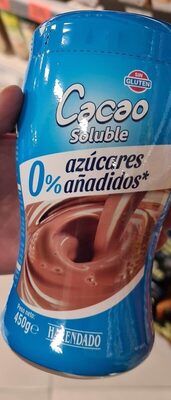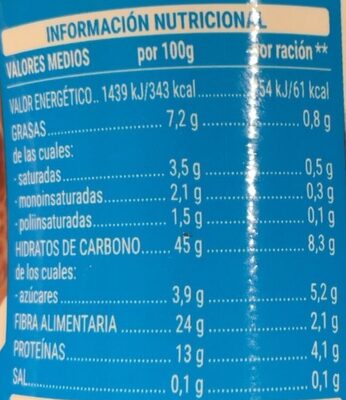Cacao soluble 0% azúcares - Hacendado - 450 g
This product page is not complete. You can help to complete it by editing it and adding more data from the photos we have, or by taking more photos using the app for Android or iPhone/iPad. Thank you!
×
Barra-kodea: 8480000228499 (EAN / EAN-13)
Izen arrunta: Preparado alimenticio al cacao para desayunos y meriendas con edulcorantes, sin azúcares añadidos
Kopurua: 450 g
Ontziratzea:
en:Green dot
Markak: Hacendado
Kategoriak: en:Beverages, en:Cocoa and its products, en:Cocoa and chocolate powders, en:Instant beverages, en:Cocoa powders
Etiketak, ziurtagiriak, sariak:
en:No gluten, en:Contains a source of phenylalanine, en:Green Dot, No added sugar, en:With sweeteners
Dendak: Mercadona
Saltzen diren herrialdeak: Espainia
Matching with your preferences
Ingurumena
Carbon footprint
Ontziratzea
Transportation
Report a problem
Datuen iturria
Product added on by kiliweb
Last edit of product page on by duhowpi.
Produktuaren orria -gatik editatua alia, elcoco, roboto-app, yuka.sY2b0xO6T85zoF3NwEKvlhV5dvyH8hTvKjXjxEKonuXSP4HlPv5t-pXeNqg, yuka.sY2b0xO6T85zoF3NwEKvlkdhatnAjxDuZx_gs2-U5PyFDobkQIBT_LTqKKg, yuka.sY2b0xO6T85zoF3NwEKvlmB9WdTfpw_eDkbtpRCh386ELKLpR_Ve7bHHEao, yuka.sY2b0xO6T85zoF3NwEKvlmhMb-fggjj_LDDQpk6n782hJabpS_9j4Nj7aKo.











